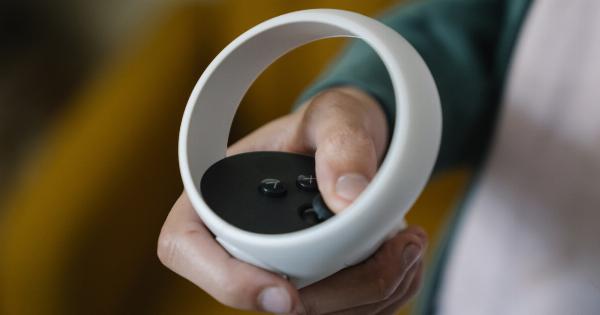Cardio Climb is not your ordinary game. It’s a game that challenges doctors and patients to work together to beat hypertension. Hypertension, also known as high blood pressure, affects millions of people around the world.
It’s a chronic condition that can lead to serious health problems, such as heart attack, stroke, and kidney failure. Despite its serious consequences, hypertension can be managed with the right tools and support.
What is Hypertension?
Hypertension is a common condition in which the long-term force of the blood against the walls of the arteries is high enough to cause health problems.
Blood pressure is determined by the amount of blood your heart pumps and the amount of resistance to blood flow in your arteries. The more blood your heart pumps and the narrower your arteries, the higher your blood pressure.
Hypertension is often called a “silent killer” because it usually has no symptoms, yet it can cause serious damage to your body, especially your heart and kidneys.
According to the Centers for Disease Control and Prevention (CDC), about 1 in 3 American adults have hypertension, and more than half of them don’t have it under control. Hypertension is a major risk factor for heart disease, stroke, and kidney disease.
What Causes Hypertension?
The causes of hypertension are not fully understood, but several factors can contribute to it, such as:.
- Age
- Family history of hypertension
- Obesity
- Lack of physical activity
- Smoking
- High salt intake
- Stress
- Chronic kidney disease
In some cases, hypertension can be caused by an underlying medical condition, such as sleep apnea, thyroid problems, or adrenal gland tumors.
Rarely, certain medications, such as birth control pills, cold medicines, and some prescription drugs, can cause hypertension.
How is Hypertension Diagnosed?
Diagnosing hypertension is simple and painless. Your doctor will measure your blood pressure using a device called a sphygmomanometer, which consists of an inflatable cuff, a pressure gauge, and a stethoscope.
The cuff is wrapped around your upper arm, and the pressure is slowly released while your doctor listens to your pulse with the stethoscope.
Your blood pressure is measured in millimeters of mercury (mm Hg) and is recorded as two numbers:.
- Systolic pressure: The top number, which is the pressure in your arteries when your heart beats
- Diastolic pressure: The bottom number, which is the pressure in your arteries when your heart rests between beats
Normal blood pressure is less than 120/80 mm Hg. High blood pressure is defined as a reading of 130/80 mm Hg or higher.
If your blood pressure is consistently high, your doctor may suggest that you monitor it at home and recommend lifestyle changes or medication to lower it.
How is Hypertension Treated?
Treating hypertension involves a combination of lifestyle changes and medication. Lifestyle changes that can help lower your blood pressure include:.
- Eating a healthy diet, such as the DASH (Dietary Approaches to Stop Hypertension) diet, which emphasizes fruits, vegetables, whole grains, and low-fat dairy products, and limits saturated and trans fats, sugars, and salt.
- Increasing physical activity, such as brisk walking, cycling, or swimming, for at least 30 minutes a day, most days of the week.
- Losing weight if you are overweight or obese.
- Reducing salt intake to less than 2,300 milligrams (mg) a day.
- Limiting alcohol intake to one drink a day for women and two drinks a day for men.
- Quitting smoking.
If lifestyle changes are not enough to lower your blood pressure, your doctor may prescribe medication. There are several types of medication that can lower blood pressure, such as:.
- Diuretics: Also called water pills, diuretics help your kidneys eliminate sodium and water from your body, which reduces the volume of your blood and lowers your blood pressure.
- Angiotensin converting enzyme (ACE) inhibitors: ACE inhibitors prevent the production of a hormone called angiotensin II, which constricts your blood vessels and raises your blood pressure.
- Angiotensin II receptor blockers (ARBs): ARBs block the action of angiotensin II, which lowers your blood pressure.
- Calcium channel blockers: Calcium channel blockers relax the muscles of your blood vessels, which widens them and reduces your blood pressure.
- Beta-blockers: Beta-blockers reduce the workload of your heart and slow down your heart rate, which lowers your blood pressure.
The Benefits of Cardio Climb
One of the biggest challenges of managing hypertension is sticking to a healthy lifestyle. It’s easy to fall into old habits, skip workouts, and indulge in unhealthy foods. That’s where Cardio Climb comes in.
It’s a game that motivates doctors and patients to work together to stay on track with their treatment plan and achieve their health goals.
Cardio Climb is a fun and engaging game that uses an avatar to represent your progress. Your avatar starts at the bottom of a mountain and climbs up as you make healthy choices and lower your blood pressure.
The game tracks your progress and provides feedback on your performance. It also allows you to connect with your doctor and share your data in real time.
The benefits of Cardio Climb include:.
- Increased motivation to stick to a healthy lifestyle
- Real-time feedback on your progress
- Connection with your doctor
- Increased knowledge about hypertension
- Improved self-care management
How to Play Cardio Climb
Playing Cardio Climb is easy and fun. Here’s how it works:.
- Download the Cardio Climb app on your smartphone or tablet.
- Create an account and set your health goals.
- Connect with your doctor and share your data.
- Start making healthy choices and monitor your progress on the app.
The app provides you with different challenges to help you achieve your goals. For example, it may challenge you to walk 10,000 steps a day, eat a healthy lunch, or reduce your salt intake.
As you complete each challenge, your avatar climbs up the mountain, and you receive feedback on your progress. You can also connect with other players and share your experiences.
The Future of Cardio Climb
Cardio Climb is just the beginning. It’s a game that shows how technology can help improve healthcare outcomes and engage patients in their own care.
In the future, we can expect more games and apps that focus on preventing and managing chronic diseases, such as hypertension, diabetes, and obesity.
With the help of technology, we can transform healthcare from a reactive system to a proactive one, where patients have access to personalized care and support, and doctors have the tools and data to make better decisions.
Conclusion
Hypertension is a serious condition that affects millions of people worldwide. It’s a chronic condition that can lead to serious health problems if left untreated. However, with the right tools and support, hypertension can be managed and even prevented.
Cardio Climb is a game that challenges doctors and patients to work together to beat hypertension. It’s a fun and engaging way to motivate patients to stick to a healthy lifestyle and achieve their health goals.
By playing Cardio Climb, patients can improve their knowledge about hypertension, increase their motivation to stick to a healthy lifestyle, and connect with their doctor and other players.
The future of healthcare is bright, and games like Cardio Climb are just the beginning. With the help of technology, we can transform healthcare and improve the lives of millions of people around the world.





























